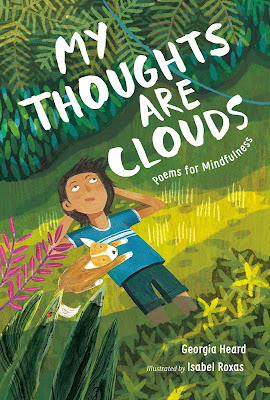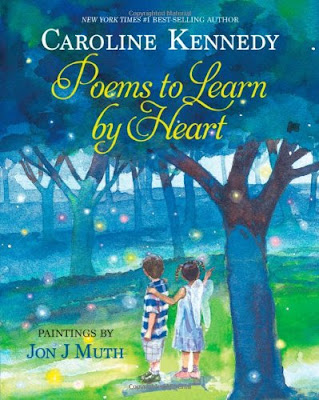Dragonwings
Bibliography:
Yep, Laurence. Dragonwings. New York: HarperCollins, [1975] 2001. ISBN: 0064400859Plot Summary:
 At the dawn of the 20th century, young Moon Shadow leaves the Middle Kingdom (known in the West as “China”) to join his father in the Land of the Golden Mountain (the United States). Though they had never met, they soon learn to become father and son, working together in their laundry company in San Francisco in the part of town where the other Tang people live. To Moon Shadow and the others, this land is strange and inhabited by white demons with unusual customs and often dangerous enmity towards them, hurling rocks and slurs at them or hanging Tang men by their braided queues from lampposts.
At the dawn of the 20th century, young Moon Shadow leaves the Middle Kingdom (known in the West as “China”) to join his father in the Land of the Golden Mountain (the United States). Though they had never met, they soon learn to become father and son, working together in their laundry company in San Francisco in the part of town where the other Tang people live. To Moon Shadow and the others, this land is strange and inhabited by white demons with unusual customs and often dangerous enmity towards them, hurling rocks and slurs at them or hanging Tang men by their braided queues from lampposts.Moon Shadow also discovers that his father has a new name, Windrider, given to him in a dream by the Dragon King who reveals that Windrider is truly a dragon who has been sentenced to live a lifetime in a soft human body. Windrider must prove his “dragonness” in this life by passing a series of tests, one of which is accomplishing his dream of mastering the art of flight. As father and son must learn which demons can be trusted and which to avoid, they venture out into the city and rent a stable in the backyard of a kind demoness and her demon child. They form a close friendship with these hospitable and curious demons, flying kites by the sea, learning each other's customs, and connecting with the famous Wright brothers through a series of letters discussing the science of flight. When an earthquake devastates San Francisco and fire consumes most of the city, the Tang people and their new demon friends find comfort in each other’s hospitality. Perched in the hills above Oakland, Windrider and Moon Shadow make a new home and dedicate their energy to constructing a flying machine. With the help of their friends, demon and Tang alike, Windrider briefly soars above the hills and returns to the ground with a new perspective on the value of family and the mountain of gold that exists in human relationships.
Critical Analysis:
In this gorgeous and sensitive novel, Laurence Yep illuminates the humanity of Chinese immigrants in California at the turn of the century by making personal the abstract facts of the people who inhabited that specific time and place. The author’s choice to refer to white westerners as “demons” throughout the novel highlights the strangeness and caution with which the Tang characters viewed their neighbors, keeping the reader in tune with the foreignness of the protagonists’ experiences. The customs, architecture, style of dress and hair, and the social dynamics of the Tan village all reflect an authentic picture of immigrant life in early 20th-century San Francisco.A lovable cast of characters, both Tang and western, brings their common humanity into crisp focus. As Mrs. Whitlaw muses after learning about the wise and generous Chinese dragons, “Perhaps the truth of the dragon lies somewhere between the American and the Chinese versions. He is neither all-bad nor all-good, neither all-destructive nor all-kind.” This timeless lesson on human nature is revealed in multiple poignant moments in which individuals from both cultures demonstrate their deep flaws, violence, and addiction, as well as their equally deep capacity for love and kindness. Readers young and old will easily recognize these familiar truths even if they appear in an unfamiliar setting.
The plot is firmly anchored in history by the earthquake of 1906 and the true story of Fung Joe Guey, a young Chinese man who actually flew his flying machine over the hills of Oakland in 1909. While Yep carefully crafts an authentic tale which he describes as a “historical fantasy,” the story, and its profound meaning, feels genuine, relevant, and deeply personal. Yep writes in his author’s note: “...it has been my aim to counter various stereotypes as presented in the media.” The author clearly succeeds in this pursuit. Since its publication in 1975, generations of readers have loved this book, a testament to its lasting value. In Dragonwings, the universal truths of family and the priceless treasure of community soar like colorful, paper kites, majestic and free.
Awards and Review Excerpts:
1976 Newbery Honor Book1976 Carter G. Woodson Book Award
1995 Phoenix Award
“Windrider (based loosely on an actual Chinese-American aviator) is a fascinating figure who believes deeply in the old myths and is entranced by the new magic of electricity, motor cars and aeronautics.” Kirkus Reviews
"A fine, sensitive novel written with grace in a way that conveys the Chinese American's cultural heritage." Booklist
Connections:
Explore other award-winning books from Yep’s Golden Mountain Chronicles, a saga that follows the Young family through several generations:Dragon’s Gate (1867). New York: HarperCollins, [1993] 2001. ISBN: 0064404897
Child of the Owl (1965). New York: HarperCollins, [1977] 2001. ISBN: 067370372X
Invite readers to build and fly their own Chinese kites:
Bin, Liu and Shi Xifa. Chinese Kites: An Illustrated Step-by-Step Guide. Beijing: Shanghai Press, 2014. ISBN: 1602200149



Comments
Post a Comment